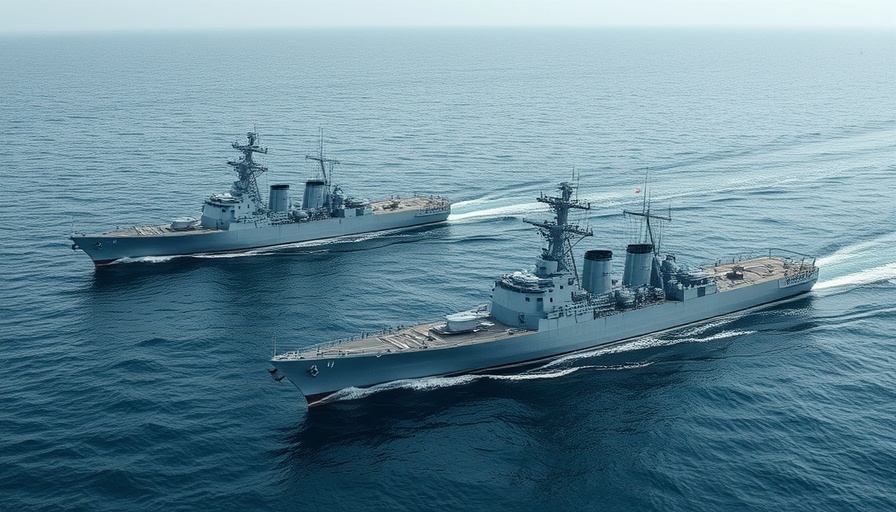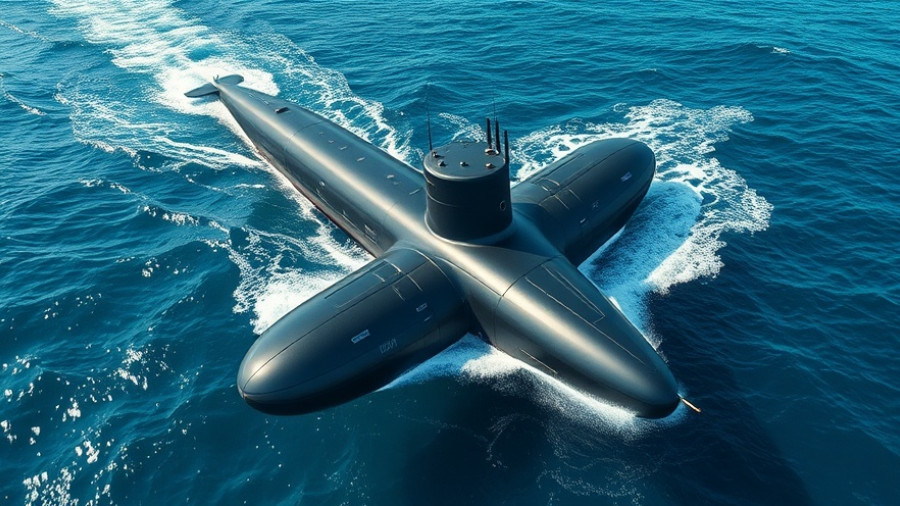
Showcasing Naval Innovation at DSEI UK 2025
The upcoming DSEI UK 2025 event is set to make waves with the announcement of four international and Royal Navy ships, including the renowned HMS Iron Duke. This highlights not only the UK's impressive naval capabilities but also its commitment to collaboration with allied forces. Attendees can expect first-hand experiences with cutting-edge maritime technologies, which are crucial in today’s fast-evolving security landscape.
Waterborne Demonstrations: A Must-See
Fans of naval technology should keep their eyes peeled for the exciting waterborne demonstrations scheduled for DSEI UK 2025. Twice a day, visitors will be treated to live showcases, featuring both manned and autonomous vessels. For example, the L3Harris Shadow Fox Autonomous Surface Vehicle stands out due to its ability to operate beyond the line of sight for extended durations, revolutionizing naval operations. Another key participant, ACUA Ocean’s USV Pioneer, is designed to carry sensor payloads in challenging sea conditions, emphasizing the UK’s innovative edge in maritime warfare.
International Forces: Strength in Unity
This year, DSEI will see participation from not just the Royal Navy but also impressive international contributions. The German Navy's FGS Sachsen and the Belgian Navy's BNS Pollux will join the proceedings, showcasing a united front in maritime security. The presence of these vessels underscores the importance of multilateralism in addressing the pressing challenges of our time, especially amid rising global tensions.
The Significance of the HMS Iron Duke
Among the notable vessels highlighted is the HMS Iron Duke, a versatile Type 23 frigate. This ship plays an essential role in maintaining maritime security and has been engaged in various operations, including humanitarian missions, policing trade routes, and participating in NATO exercises. In July 2025, Iron Duke notably escorted a Russian vessel through UK waters—a testament to the ongoing efforts to safeguard national security and uphold the integrity of UK maritime interests.
Geopolitical Context: A Volatile Maritime Landscape
The maritime domain continues to serve as a pivotal arena for asserting control and influence, especially in regions facing geopolitical tensions. The UK's Carrier Strike Group's eight-month deployment to the Indo-Pacific further illustrates a proactive approach to bolster regional security through multilateral cooperation, highlighted by exercises like Talisman Sabre. Such efforts signify a commitment to collective security and demonstrate the need for nations to adapt to contemporary threats through collaboration.
Looking Ahead: Opportunities in Maritime Technology
As we prepare for DSEI UK 2025, it's vital to consider how advancements in maritime technology can facilitate future collaborations. The integration of unmanned systems and innovative ship designs will undoubtedly forge new pathways for naval operations, resource management, and strategic alliances. Understanding these advancements can equip attendees with insights into the future of naval engagements and their impact on global maritime security.
Engaging with Innovation for a Safer Future
The DSEI UK 2025 event presents an invaluable opportunity for professionals, industry leaders, and enthusiasts alike to witness the evolution of naval capabilities. By engaging with these demonstrations, participants have the chance to contribute to the collective discourse on enhancing maritime security. Whether it’s through witnessing the deployment of cutting-edge technology or sharing ideas with fellow attendees, DSEI serves as a crucial platform for sparking innovation and collaboration in the naval domain.
 Add Row
Add Row  Add
Add 




Write A Comment